Samsung Galaxy Note 10.1 (2014 Edition) Review
by Brian Klug & Anand Lal Shimpi on October 1, 2013 9:00 AM EST- Posted in
- Tablets
- Samsung
- Mobile
- Galaxy Note 10.1
Display
The 2014 Edition features a 10.1-inch 2560 x 1600 Super LCD display. Looking at the subpixel structure of the panel we get an idea for exactly what Super LCD means: RB,GW.
Instead of a standard RGB stripe we get a combination of red, green, blue and white subpixels for each pixel. The white subpixel helps increase light throughput, an obvious problem with these ultra high resolution displays. The downside is that you get a lower subpixel density than a traditional RGB stripe. At these ultra high pixel densities however, the theory is that you wouldn’t notice the difference - hopefully making the power savings by having better light transmission, particularly when displaying lots of white (e.g. web pages), worth it.
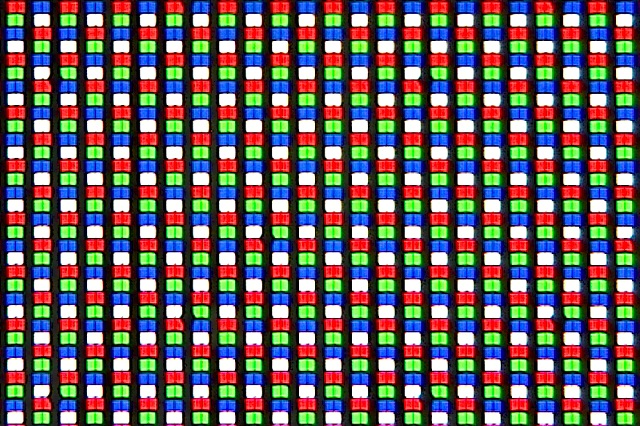
In practice the display looks pretty good, although a carefully trained eye will be able to recognize that this isn’t a standard RGB stripe. I quickly realized something was different about the display, something I later verified when looking at the subpixel structure.
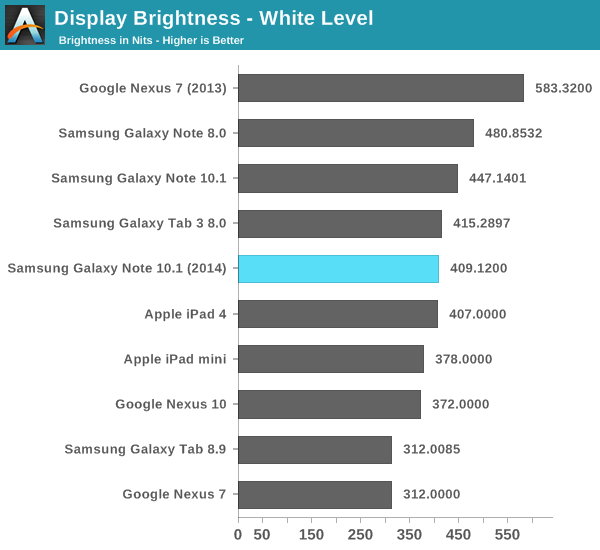
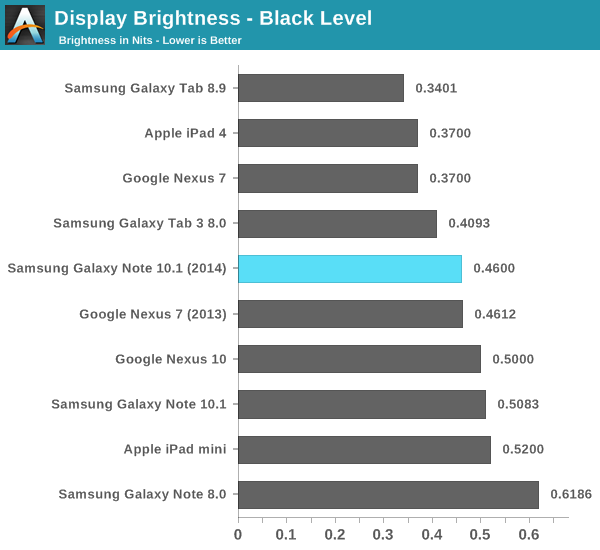
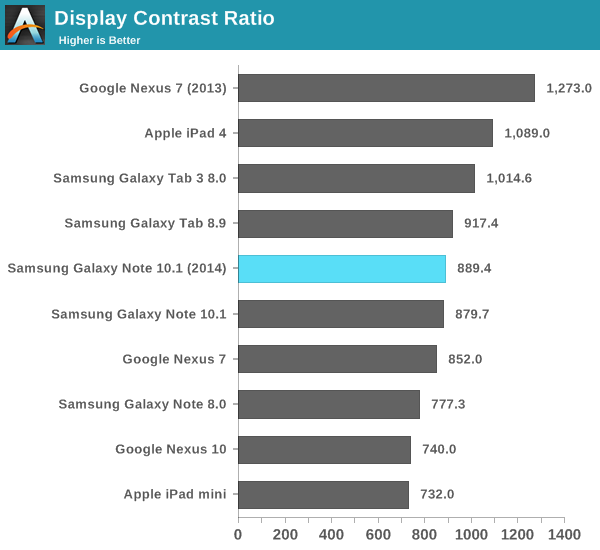
Color accuracy is pretty decent on the Note 10.1’s display. As always I’m reporting color data using Samsung’s Movie mode, which remains the most accurate setting of those offered. Grayscale performance is excellent, but our GMB and saturations tests put the Note 10.1 on par with the original Nexus 7. It’s definitely a better calibrated display than any other Samsung Galaxy Note tablet we’ve reviewed. Not quite on par with the new Nexus 7, but getting very close.
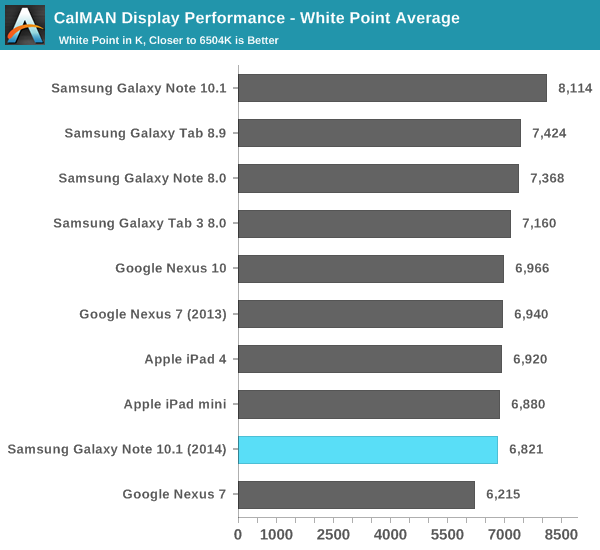
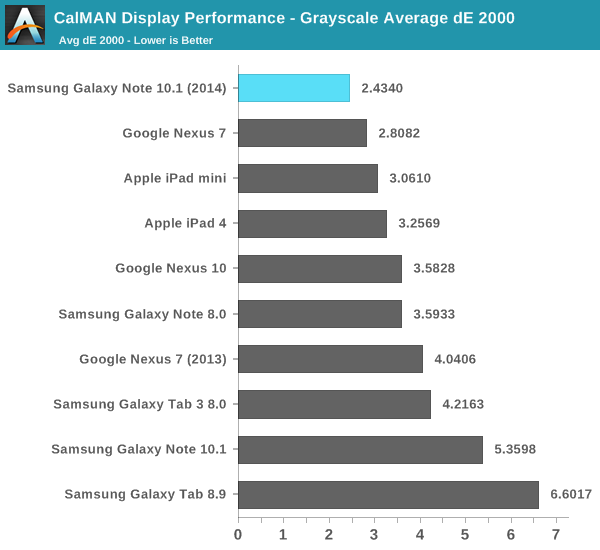
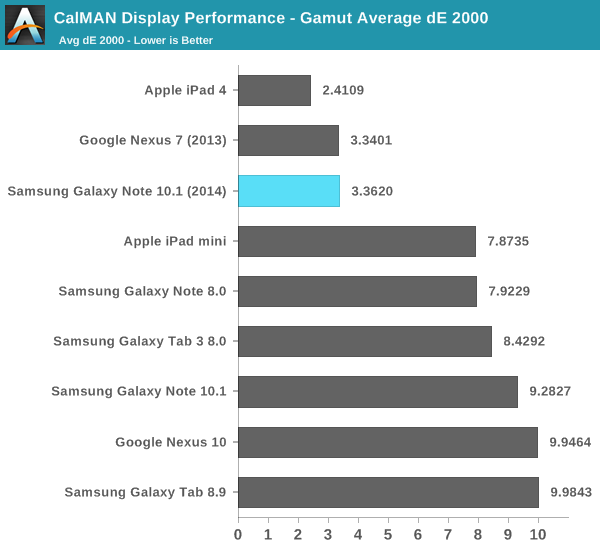
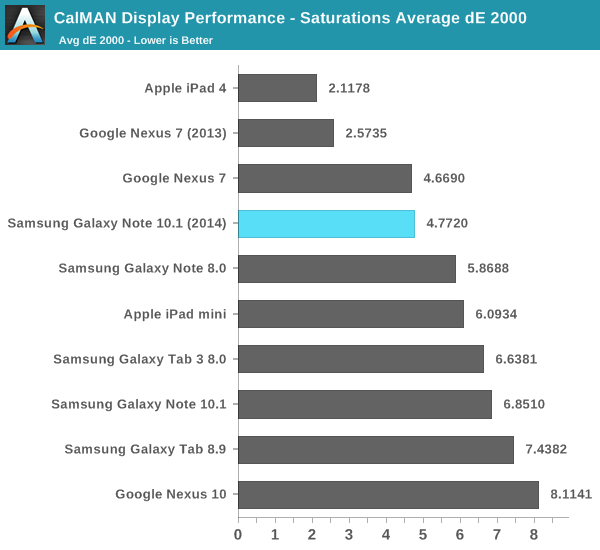
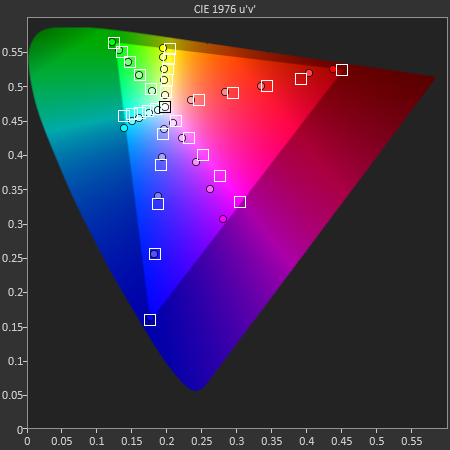
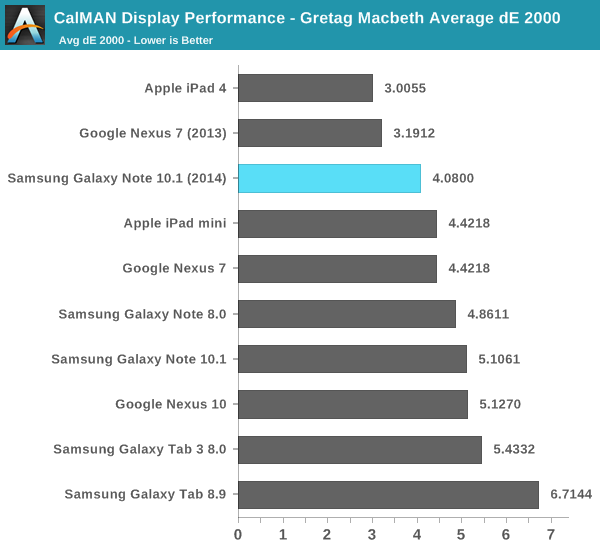

Camera
The 2014 Edition features a rear facing 8MP camera with AF and LED flash and a 2MP front facing camera. Image quality out of the rear camera was pretty good for a tablet. I took some photos using the tablet and tossed them in the gallery below, as well as embedded a sample 1080p video recorded using the tablet.
Battery Life & Charging
The Galaxy Note 10.1 (2014 Edition) ships with an integrated (non-removable) 31Wh battery, that’s substantially smaller than the iPad 4’s 42.5Wh battery - helping it maintain a more svelte figure. The question is how power efficient the combination of RB,GW panel and Exynos 5420 are in combination with one another.
We’ll start with our typical WiFi web browsing battery life test. Here we see a good combination of regular spikes in CPU usage with idle time, hopefully simulating constant, reasonably paced usage.
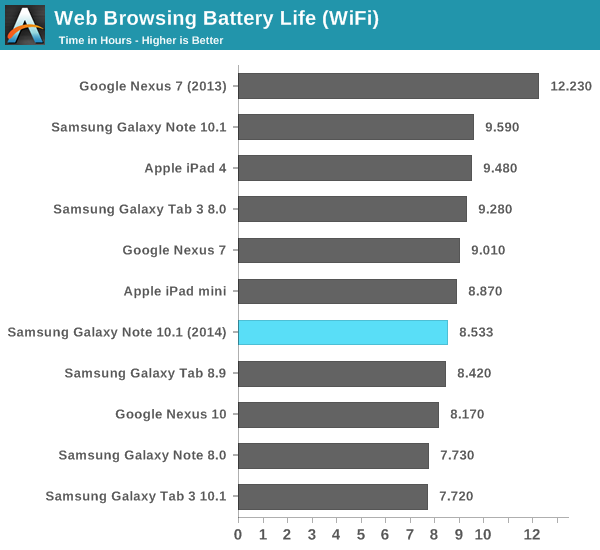
The 2014 Edition does a bit better than the Nexus 10, but clearly worse than the original Note 10.1 (and obviously worse than the much smaller Nexus 7). There’s not much you can do here other than to point out that we’re talking about an extremely high resolution panel, with an extremely power hungry SoC. The fact that we’re talking about more cores running at a higher frequency than the Exynos 5250 used in the Nexus 10 is good news, but Exynos 5420 also enjoys the benefits of being on Samsung’s 28nm LP process as well.
The video playback story is much better however. With the power hungry Cortex A15 cores able to power down (and hopefully remain there), we’re really testing the display and video decode engines here:
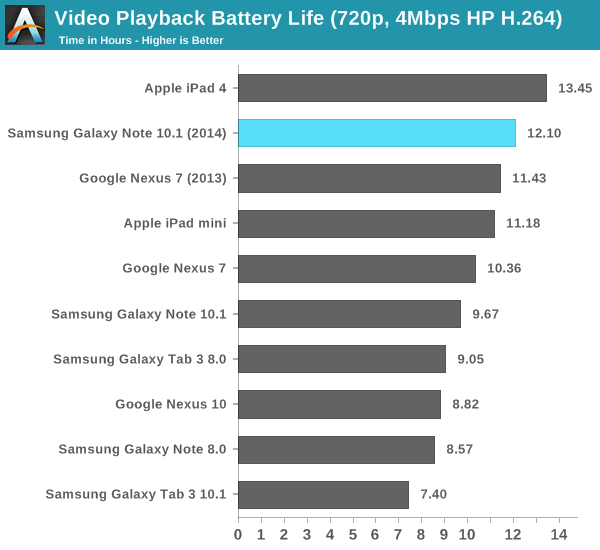
The Note 10.1 beats the new Nexus 7 and is only 10% behind the iPad 4, despite having a much smaller battery.
Like the Nexus 10, the Galaxy Note 10.1 (2014 Edition) takes an incredible amount of time to charge with the bundled 2A charger. A full charge from 0 to 100% took just over 7 hours.
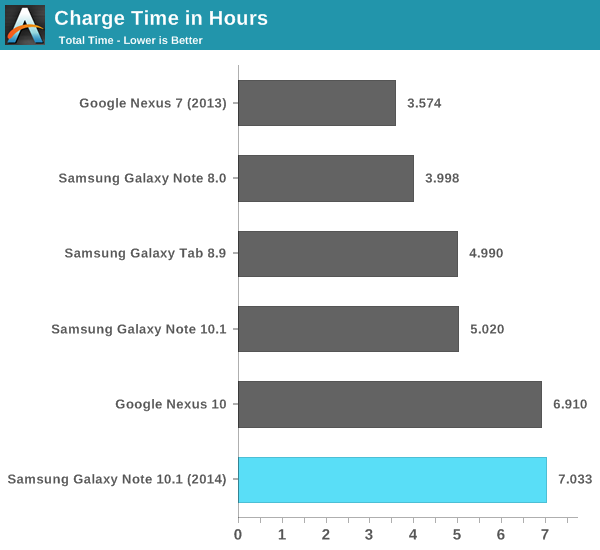
















97 Comments
View All Comments
danbob999 - Tuesday, October 1, 2013 - link
Not only HPC. Pretty much any multi-threaded CPU test. And these do not include javascript benchmarks, which as stated many times on this web site, tests the software more than the hardware.AndreiLux - Wednesday, October 2, 2013 - link
In the end MHz and number of cores is irrelevant because:http://chip-architect.com/news/Apple_A7_Samsung_54...
Their two cores are as big as four A15's. Clocks are also irrelevant as seen with Qualcomm vs ARM designs.
What in the end matters is perf/mm² and that dictates the better design.
MySchizoBuddy - Tuesday, October 1, 2013 - link
so according to you apple's MINOR modifications has improved performance to such a level that even a quad core cannot beat it. Damn Apple engineers must be super geniuses.ddriver - Wednesday, October 2, 2013 - link
No, it does not beat a quad core, one core of the A7 beats one core of the snapdragon 800 by about 20%. Anand only uses single threaded tests to compare the two processors, and not even native code, but JS running on different VMs.Using all the cores, the snapdragon is way faster than A7, that is why no such benchmarks are present to ruing the myth of A7's performance.
KPOM - Friday, October 4, 2013 - link
And how many mobile apps make full use of multi-core processors? Furthermore, thermal limitations prevent the quad-core processors from achieving maximum performance all the time, hence the whole controversy over "rigged" benchmark results. Let's face it. Apple made the right decision in sticking with a dual-core design with faster single-core performance. For what people use mobile devices to do today, it's the best balance between performance and power consumption.ESC2000 - Thursday, October 10, 2013 - link
But then they stuck a tiny battery in there (guess they had to because of the iPhone tiny size) so there's no actual battery life advantage. In fact, the first night I had my iPhone it died over night and the alarm didn't go off, causing me to be late to work. The reason appeared to be that it couldn't handle pushing email every fifteen minutes. So yeah I don't think the iPhone stands out for its battery... Look at the Motorola phones for amazing battery life.abazigal - Friday, October 11, 2013 - link
How much battery life did your iphone have when you went to sleep? I typically plug in my iphone to charge before turning in for the night, and even if I didn't, it boasts impressive standby capabilities and the battery life dipped very little throughout the night (around 5-6% max for 6 hours, or 1% per hour).abazigal - Friday, October 11, 2013 - link
Either that, or the engineers in the other companies are totally inept for failing to make those small changes to optimise their chips for better performance and energy savings.name99 - Tuesday, October 1, 2013 - link
Please tell us which ARM reference design it is that Apple "modified slightly"...You seem deeply confused about what CPU design is and how it works. What would you define as a non"conventional arm v8 chip"?
steven75 - Wednesday, October 2, 2013 - link
You should probably read Anandtech's own review of the A7 chip.